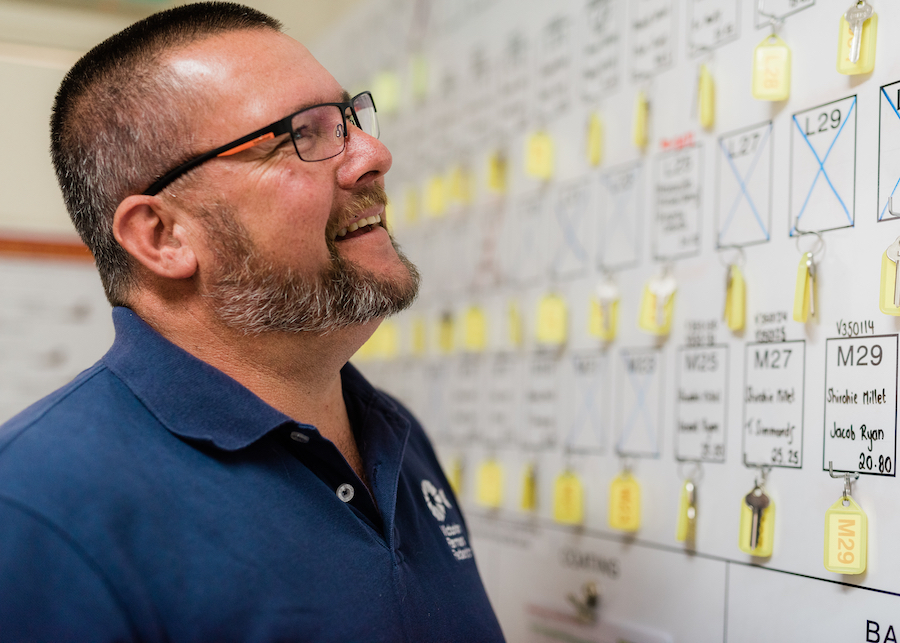The age-old backyard practice of growing two or more crops together – so-called intercropping – has new localised performance-based appeal for north-east Victorian grower Ashley Fraser.
This changing outlook on the broadacre viability of intercropping originates from Ashley’s observation of trials in the Rutherglen district, where he farms 2500 hectares with his wife Pam and business partners Andrew and Sue Russell.
There, in the town flanked by the Murray River, Ashley was a keen spectator to intercrop trials testing the productivity and profitability of four companion crops, each combining two crop species at the Rutherglen Research Institute.
Contenders in the trials measuring the competitive performance of twin crops were field peas-canola, faba beans-canola, faba beans-wheat and barley-canola.
Ashley says that observing the tussle in which twin crops fought for yield and profit advantage, over three seasons from 2019-21, has led to a rethink of the potential for intercropping in his farm business.
He plans to grow either faba beans-canola or field peas-canola in the next five years, based on the trial findings. The trials were part of the Victorian Grains Innovation Partnership with co-investment from GRDC and Agriculture Victoria.
If introduced, a twin crop would complement the farm’s existing program of wheat, canola, oats, barley, triticale, faba beans, field peas and lupins. The farm business, trading as Lilliput-Ag and Baker Seed Company, produces grain and seed respectively.
Agriculture Victoria senior research scientist and team leader Dr Garry O’Leary says the statewide trial program has shown intercropping to be a potentially lucrative option for many Victorian growers, including Ashley and his business partners.
The Rutherglen trial site was one of three main sites, also established at Horsham and Hamilton, plus six satellite sites at Inverleigh, Willaura, Curyo, Netherby, Burramine South and Caniambo.
The largest yield responses were recorded at Rutherglen, where 16 of 23 twin crops were more profitable than monoculture crops, Dr O’Leary says.
This outstanding twin crop performance at Rutherglen is thought to be linked to high rainfall in the north-east region. Annual rainfall on Ashley’s property, for example, averages 600 millimetres.
In contrast, trials in the drier Mallee region showed twin cropping was only more profitable than monoculture cropping in one of 18 trials at Curyo, and three of 18 trials at Netherby.
“Overall, the profit gains ranged from $50 to $800 per hectare, with legume and oilseed mixtures showing the most consistent gains,” Dr O’Leary says.
He says the research generally identified field peas-canola and faba beans-canola as the most potentially profitable intercrops, and these are the twin cropping options that Ashley finds the most attractive.
Quality control strategy

Ashley Fraser experimented with a twin crop of field peas-canola to lift the quality and, in turn, the germination rate of field peas grown for seed production at Baker Seed Company. Photo: Georgie James
Ashley’s interest in combining a legume and an oilseed as a twin crop also reflects his experience growing field peas-canola, so called ‘peaola’, about 10 years ago.
His foray into field peas-canola cropping was part of a strategy to lift the low germination rate of field peas grown for seed production, thought to be caused by mechanical damage during harvest and storage. “The idea was that the tiny canola seed would act as a lubricant that surrounds and protects the larger, damage-prone field pea seed from mechanical damage,” Ashley says.
To this end, the two crops were windrowed, harvested and stored together, with field peas and canola only separated in the final stages of seed cleaning.
The strategy was effective. It partly improved the quality and, ultimately, germination of the field pea seed. But persisting quality issues that still rendered the seed unsaleable showed the problem originated from the cultivar’s genetic make-up, rather than mechanical damage.
More information: Ashley Fraser, 0418 176 764, ashley.fraser@bakerseedco.com.au

























































